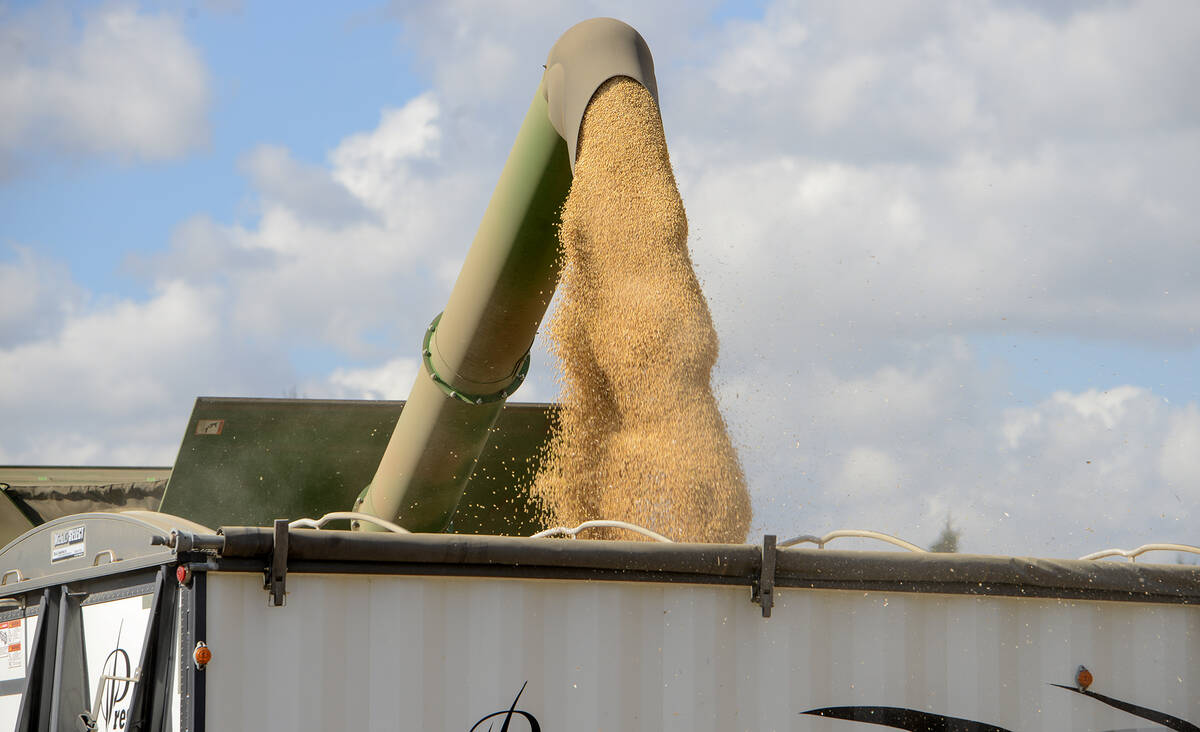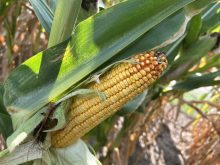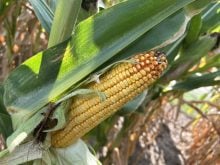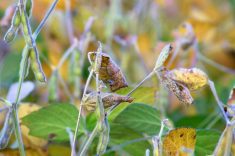Glacier FarmMedia – The Westman Agricultural Diversification Organization has done a lot of work with intercrops, from honing the agronomy of more established companions like ‘peaola’ (peas and canola), to trying out new mixes like pulses and flax.
A novel trial at the research farm’s site near Melita this year put soybeans amid the corn.
Why it matters: Companion cropping seeks to find two or more species that complement each other for better growth, extended grazing or agronomic benefits.
Read Also

Grain markets hungry for U.S. data
The U.S. government shutdown meant that futures markets were left without robust grain supply information
“The objective for this project is to find seeding strategies to optimize corn intercropping with high-protein forage for potential late fall or early winter grazing by beef cattle,” said WADO applied research specialist Scott Chalmers. “This is year two for us and we have four cover crops growing below wide-row corn.”
Aside from soybean, WADO turned to species like radish, Italian rye grass, crimson clover and hairy vetch. Of those, Chalmers said the radish grew well but the rye grass was slow out of the gate.
Both vetch and clover needed reseeding due to wildlife. Those forages were very popular with local deer and gophers that visited from the pasture next door.
Soybeans stood out.
“We got the idea from Joe Gardiner with Covers & Co.,” Chalmers said. “He showed me this video at Ag Days where they were silaging corn. He had these green soybeans in the canopy and in the lower part of the crop. He was getting some of the soybeans in the silage unit, but leaving some behind. He could send the cows out afterward to finish it off and get extended grazing.”
Gardiner didn’t use a grain soybean as a companion to his corn. Instead, he sourced a forage soybean variety from South Carolina that would grow slowly and stay vegetative. The variety wasn’t meant for seed production; it was marketed for improved soil heath and grazing.
“A plant that hits reproduction takes that energy and puts it towards seed production,” Gardiner said.
A plant that stays vegetative puts more root exudates back in the soil.
One obvious benefit courted by Gardiner in his crop selection was the ability for legumes to fix nitrogen. He hoped that would feed the corn while the chemical exudate fed soil organisms to help develop a thriving community of soil microbes.
This would nourish the soil and aid development of aggregates, leaving spaces for air and water.
“But what was very exciting to me – because I love playing with corn row widths – on trials at our place on 60-inch corn, we saw a hundred pounds of residual nitrogen,” Gardiner said. “And on three trials last year on two other farms, we were seeing residual nitrogen numbers that were anywhere between 40 and 50 pounds on 30-inch rows.”
Infiltration was another plus on Gardiner’s pro-con list. Intercropped corn showed better water infiltration compared to his monocrop fields. That means better water conservation, something of particular interest this year when the season started dry and most rain came from isolated but intense storms.
After hearing Gardiner’s results, Chalmers started planning field plots at WADO to see how different treatments would work in a more tightly controlled experiment.
He consulted Gardiner on details of the trial, such as the range and combination of seeding dates and corn row spacings.
Plots were eventually seeded at a rate of 47,000 plants per acre, 32,000 of which were corn. WADO opted for a Group VIII maturity soybean, usually marketed in regions like Texas and Florida.
“They have a real lanky look to them but that could be the effect of the corn,” Chalmers said.

This summer’s high temperatures and low rainfall created an abnormal growing season for research results. Corn grew quickly in the spring heat, completely outgrowing the forages.
“We’re also looking at nodule timing so we dig up a plant every week and check for when the nodules start,” Chalmers said.
“That indicates to us when the soybeans start fixing their own nitrogen rather than relying on the fertilizer that’s in the ground.”
Corn intercrops also came with another quirk, Gardiner noted. Seeding direction is a factor.
“If you seed east-west, there’s not enough sunlight if you’re going 30-inch [rows],” he said. “Sixty inch is a little better. If you’re sowing east to west, there’s just not enough sunlight that actually gets to the soil surface.”
That worked out fine for WADO, Chalmers said. Their corn is typically seeded north-south.
He noted, though, that Gardiner’s directional advice equally applies to other intercrops with a big height disparity.
Future of the trial
With one year left in the trial, Chalmers hopes to see how the mix fares under different seasonal conditions. Final results are expected once data from all years is collected and analyzed.
“We’re going to be doing the biomass testing and the feed testing,” Chalmers said. “Then we look at the whole package and, after three years, a huge report will come out and we’ll know if this is a good thing.”















